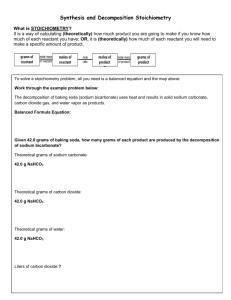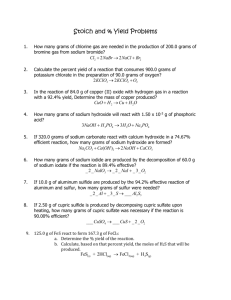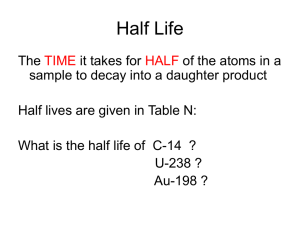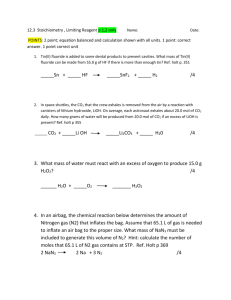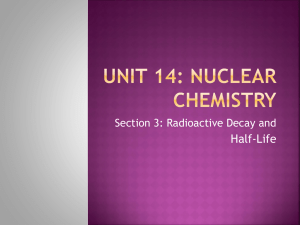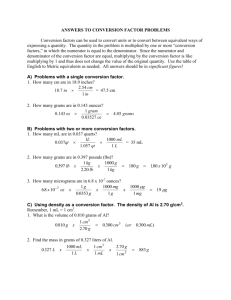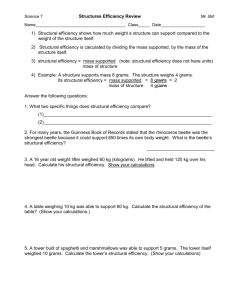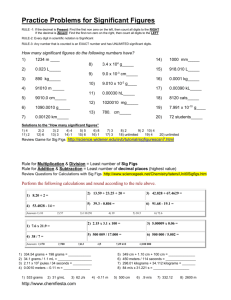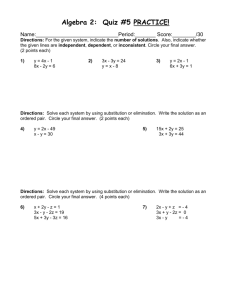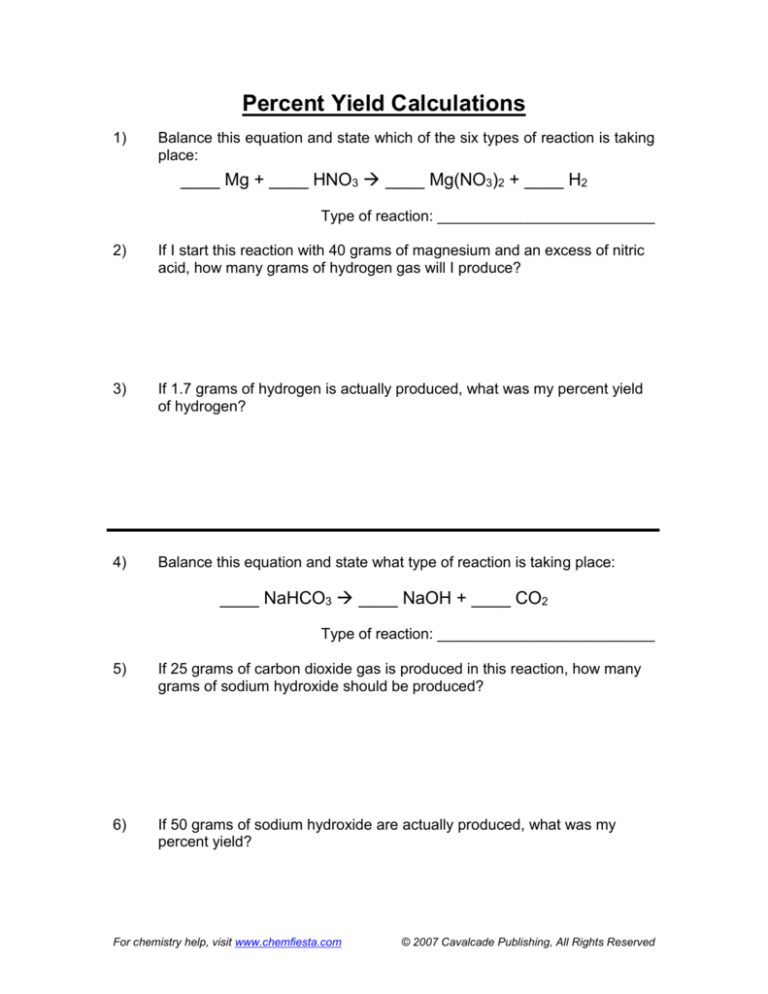
Percent Yield Calculations
1)
Balance this equation and state which of the six types of reaction is taking
place:
____ Mg + ____ HNO3 ____ Mg(NO3)2 + ____ H2
Type of reaction: __________________________
2)
If I start this reaction with 40 grams of magnesium and an excess of nitric
acid, how many grams of hydrogen gas will I produce?
3)
If 1.7 grams of hydrogen is actually produced, what was my percent yield
of hydrogen?
4)
Balance this equation and state what type of reaction is taking place:
____ NaHCO3 ____ NaOH + ____ CO2
Type of reaction: __________________________
5)
If 25 grams of carbon dioxide gas is produced in this reaction, how many
grams of sodium hydroxide should be produced?
6)
If 50 grams of sodium hydroxide are actually produced, what was my
percent yield?
For chemistry help, visit www.chemfiesta.com
© 2007 Cavalcade Publishing, All Rights Reserved
Percent Yield Calculation Answers
1)
Balance this equation and state which of the six types of reaction is taking
place:
1 Mg + 2 HNO3 1 Mg(NO3)2 + 1 H2
Type of reaction: single displacement
2)
If I start this reaction with 40 grams of magnesium and an excess of nitric
acid, how many grams of hydrogen gas will I produce?
3.3 grams (when Mg atomic mass = 24.3 grams)
3)
If 1.7 grams of hydrogen is actually produced, what was my percent yield
of hydrogen?
52%
4)
Balance this equation and state what type of reaction is taking place:
1 NaHCO3 1 NaOH + 1 CO2
Type of reaction: decomposition
5)
If 25 grams of carbon dioxide gas is produced in this reaction, how many
grams of sodium hydroxide should be produced?
22.7 grams NaOH
6)
If 50 grams of sodium hydroxide are actually produced, what was my
percent yield?
50/22.7 x 100% = 220%
Hopefully, you understand that this is not a reasonable answer to
this question and indicates that something very wrong happened
during this reaction.
For chemistry help, visit www.chemfiesta.com
© 2007 Cavalcade Publishing, All Rights Reserved

